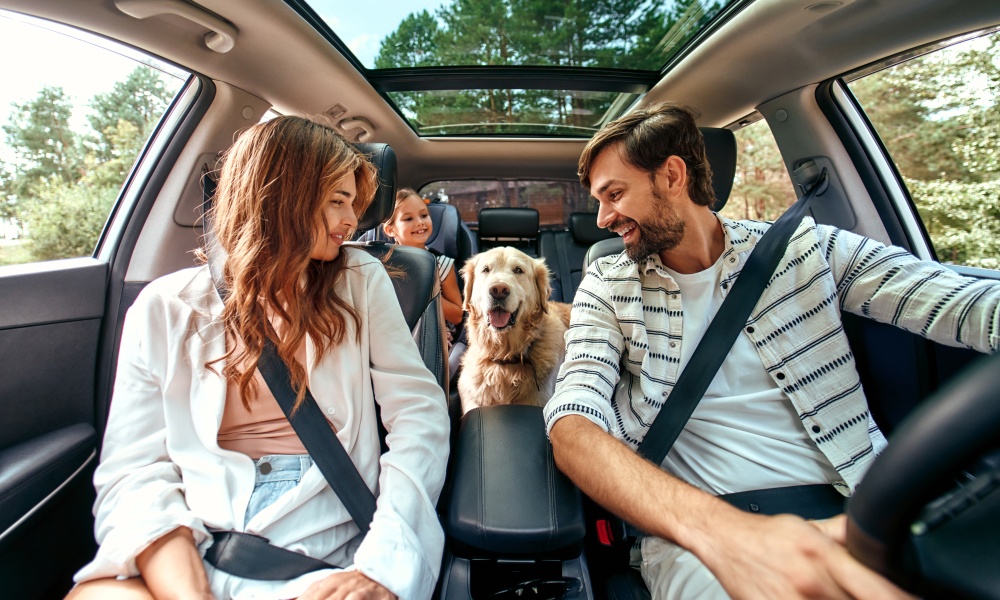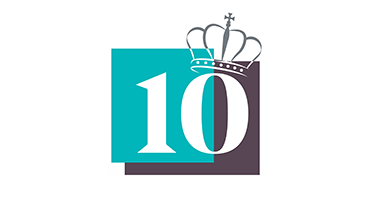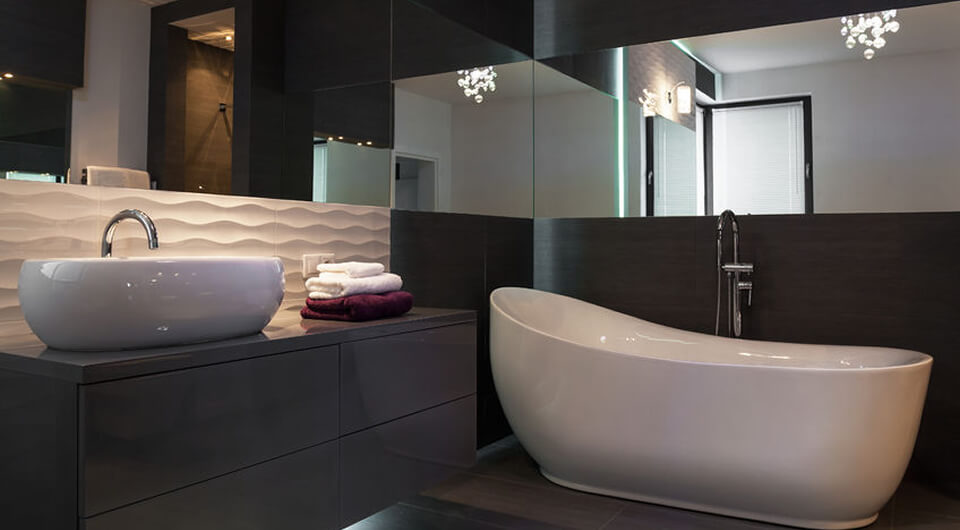How to keep dogs cool in summer – a complete guide
When the temperature outside ramps up during the summer months, we all feel the physical impact. Dogs and other domestic pets are no different. Dogs find it particularly difficult to control their body temperature – not least due to the fur coat they must contend with. They also have several biological reasons why they struggle more in the heat. When a dog overheats, a host of serious health implications can occur, so in this article we have covered everything there is to know about why and how to keep dogs cool, happy, and healthy in summer.
Why are dogs so susceptible to the heat?
- Their fur coat acts as an insulative layer. This helps them regulate their body temperature during the winter, but in hot weather, this fur can make it difficult for them to cool down because they don’t sweat like humans do. Dogs primarily cool themselves down through panting and a small amount of sweat through their paw pads.
- Dehydration. Dogs can become dehydrated quickly in hot weather, especially if they don’t have access to fresh water or shade. Dehydration can lead to various health problems and exacerbate the effects of heat on their bodies.
- They have limited sweat glands. Whilst us humans have a very effective defence mechanism against heat (sweating), unfortunately, canines do not have sweat glands and therefore cannot deal with excessive heat as well. While they are able to evaporate the heat through their panting and glands in their paws, it is nowhere near as effective as cooling them down as sweating.
Why is it important to keep your dog cool in summer?
Aside from keeping dogs comfortable, it is crucial to keep your dog cool in the heat because dogs can sometimes find it difficult to cope with the hot weather due to the reasons outlined above. They are therefore more at risk of heatstroke than we are. Heatstroke can be very serious; as a dog’s internal temperature rises it can cause damage and lead to organ failure. Shockingly, the British Veterinary Association report that 1 in 7 dogs affected by heat-related illness die from heatstroke in the UK.
Which dogs are more at risk in hot weather?
All dogs can develop heatstroke, but some dogs may be more at risk than others. Breeds with shorter snouts, such as Bulldogs and Pugs, are especially prone to heat-related issues because their airways are narrower, making it harder for them to cool down by panting. Additionally, research has found that dogs that fall into one of the following categories may have a harder time managing heat.
- Overweight
- Flat-faced
- Very energetic
- Older
- Bigger, particularly those over 50Kg
- Thick or long coats
- Underlying health conditions that may impact a dog’s ability to manage heat e.g. heart or breathing problems
Keeping your dog cool during walks
Exercise is the most common cause of heatstroke in dogs, so on hot days it is important to plan your walks. Remember to:
- Walk your dog in the early morning or evening. Avoid the midday sun and, as a general rule, if the temperature is above 32°C, it’s typically too hot to walk a dog, particularly if humidity is also a factor. High humidity can make it even harder for dogs to cool themselves through panting because the air is already saturated with moisture. Pay attention to the heat index, which considers both the temperature and humidity to assess the potential risks. Always err on the side of caution – missing a walk for a few days until the temperature drops is not the end of the world.
- Always carry water and something for your dog to drink from. There are some great portable water bottles for dogs on the market now that combine the water dispenser with drinking feeder.
- Avoid pavements. Remember that dogs don’t wear shoes and pavements on hot days can burn your dogs foot pads, so avoid them at all costs. If it is too uncomfortable for you to place the back of your hand on a pavement for several seconds, then it’s too painful for your dog to walk on.
- Use a walking harness rather than attaching a lead to their collar. Leads that pull on a collar can press on their airways and stop them cooling down effectively.
- Know the signs of heatstroke and watch out for them.
Keeping your dog cool in the
home and garden
During hot sunny days, your home will quickly warm up and, while there are tons of ways to keep your home as cool as possible, some dogs may need a little extra direct help to cope with the rise in temperature.
Remember to:
- Ensure drinking water is always doggy accessible both inside and outside the house and add ice cubes to their water bowl. Put the water bowl in the shade to keep it as cool as possible.
- Freeze a dog toy and let them chew it or give them some homemade frozen treats to help cool them off.
- Lay down damp towels for your dog to lie on or invest in a cooling mat.
- If your dog has a long or thick coat, keep them clipped and groomed.
- Keep dogs out of conservatories – they are way too hot.
- Keep them out of any areas of the home that are in direct sunlight. Adding interior shutters to your windows is a great way to avoid direct sunlight without losing light and ventilation in your home altogether. They are also an energy efficient way to passively cool your home. Don’t just take our word for it though, our customers, the BBSA and the government agree with us too! In fact, 93% of our customers say they find their shutters to be more effective at keeping the sun and heat out of a room than curtains and blinds.
- If in the garden, ensure your dog has a shaded space to keep them out of the direct sun.
- Paddling pools for dogs to splash around in are always a good call. If they are reluctant to go in, try putting some peas or their favourite treats/toys in the bottom of it to encourage them in. Playing with your dog in the hose or sprinkler is also enjoyable, but not so good for the water conscious among us.
- Keep them out of hot greenhouses.
Get creative and use up their energy in alternative ways
If the weather is extremely hot and you are having to miss walks, it’s a good idea to find less strenuous ways to use up your dog’s mental and physical energy. For example, you could hide their toys or treats in a small area and let them sniff them out, or you could create some homemade frozen puzzle toys to keep them stimulated. As mentioned above, you could use the paddling pool or a shaded area and encourage your dog to spend time in them by enticing them with toys and treats. Get creative. You’ll be surprised what you come up with after a quick search on Google for ideas.
Keeping your dog cool in the car
If you are planning a summer of fun and some lovely days out, it may mean you and your dog will be going on a few long car journeys. Whilst most cars now have air conditioning, here are some recommendations for further helping to keep your pooch cool in the car…
- Never leave a dog alone in a hot car. It can be fatal, even if the care is parked in the shade with the windows open, dogs can become distressed and uncomfortable and develop heatstroke very quickly. If you see a dog in a hot car, dial 999 (UK).
- Avoid travelling at hotter times of the day and consider travelling when there is less traffic, so you are not stuck for long periods of time.
- Ensure your dog has access to water throughout the journey. Travel with cool water in thermos to keep it cooler for longer.
- Make regular stops to check on your dog.
- Ensure your dog has a save, comfortable and cooler spot in the car e.g. directly in front of an air con vent.
- If you do not have air conditioning, open the windows.
- Use sunshades on the car windows to help reflect the sun’s rays and block out direct sunlight.
- Check the place you are visiting is dog friendly before you go and, if you are heading to the beach (although not advisable when super-hot outside), visit early morning or late evening and avoid the midday sun. Take a sun tent or beach umbrella to ensure there is always an area of shade for your dog. Remember! The sand can get very hot. If you can’t walk on it comfortably in bare feet, then neither can your dog.
Keeping your dog cool at night
A hot, muggy night can be uncomfortable and sleep depriving. Imagine trying to get through it in a fur coat and without the ability to sweat. Why not try implementing the following tips to help keep canines cool when the sun goes down:
- Open the loft hatch. Hot air rises, so opening the loft hatch will help the hot air to escape out the roof rather than accumulating on the top floor of your property.
- If you have air conditioning in one of your rooms, allow your dog to sleep in it when its very hot and humid – even if it is not where they usually sleep.
- Direct a fan towards your dog.
- Let them lie on a damp towel to keep them cool.
- Ensure they have access to water at all times during the night to keep them hydrated.
- A frozen toy in the evening will cool and calm them before bed.
- Keep your curtains, shutters, and windows closed during the day to prevent hot air from entering and cool air from escaping. Open your windows at night to help cool down your house. Full details on how to keep a room cool in the summer here.
Signs of heatstroke
Heatstroke is a serious condition that can be life-threatening for dogs. It occurs when a dog’s body temperature rises to a dangerously high level. Recognising the signs of heatstroke is crucial for taking immediate action. Here are some common signs of heatstroke in dogs:
- Excessive and rapid panting, even when not being active
- Drooling and salivating
- Bright red gums and tongue
- Rapid heartbeat
- Lethargy and weakness, disorientation or even difficulty standing or walking
- Stiffness or an unwillingness to move
- Vomiting and diarrhoea – these can be bloody
- Staggering, fitting, or collapse
If you think your dog may have heatstroke, it is crucial that you immediately contact your vet while trying to cool them down. Responding quickly and getting advice and treatment could make the difference between life and death. As we mentioned earlier, although 1 in 7 dogs that are take to vets with heatstroke die, a very large percentage of dogs that are seen early on with mild signs are likely to survive.
What to do if your dog has heatstroke
Take your dog to your vet immediately for attention, particularly if they are very unwell or unconscious. If you don’t know where your closest vet is or your registered vet is closed, you can find a vet near you here. Knowing where your nearest 24-hour vet is in case of an emergency outside of the working hours of your usual vet is always a smart idea. It is important that you begin to cool your dog as soon as possible – this can make a crucial difference to whether they survive.
Dr Keauno Renford BVetMed MRCVS, at Anderson Veterinary Surgery in Orpington told us that he recently read a study stating that 61% of dogs who have not been cooled prior to going to the vets with heatstroke die compared to 38% of dogs that had been cooled down.
How to cool a dog suffering from heatstroke
Whilst calling a vet for advice, lay your dog on a cool, shaded floor and offer them small amounts of water to drink.
Carefully pour lukewarm/cool water over the dog’s body or sponge them if water is limited. Give particular attention to their neck, tummy, and inner thighs and keep doing this (ideally) until their breathing slows and returns to normal. Dr Renford advises cooling a dog with lukewarm/cool water is better than using very cold water as cold water can cause blood vessels to constrict which can make it harder for a dog to release the heat from their body.
Fan them with cool air or put them in an air-conditioned room or car if possible – the impact of this will be bigger if they are already wet.
As a business that is passionate about community, and that is privileged to work in so many domestic properties across the South East and beyond, we understand how important it is to have a cool home for the whole household to enjoy. This includes our beloved pets! We hope this article proves useful and if you would like to find out more about how our interior shutters can cool your home, you know where we are.
Related articles
Amazing Bathroom Trends for 2017
For all your shutter inspiration
Get in touch to arrange your quote
We’ll be happy to pay you a visit so we can offer tailored, personal advice about all your shutter options.






